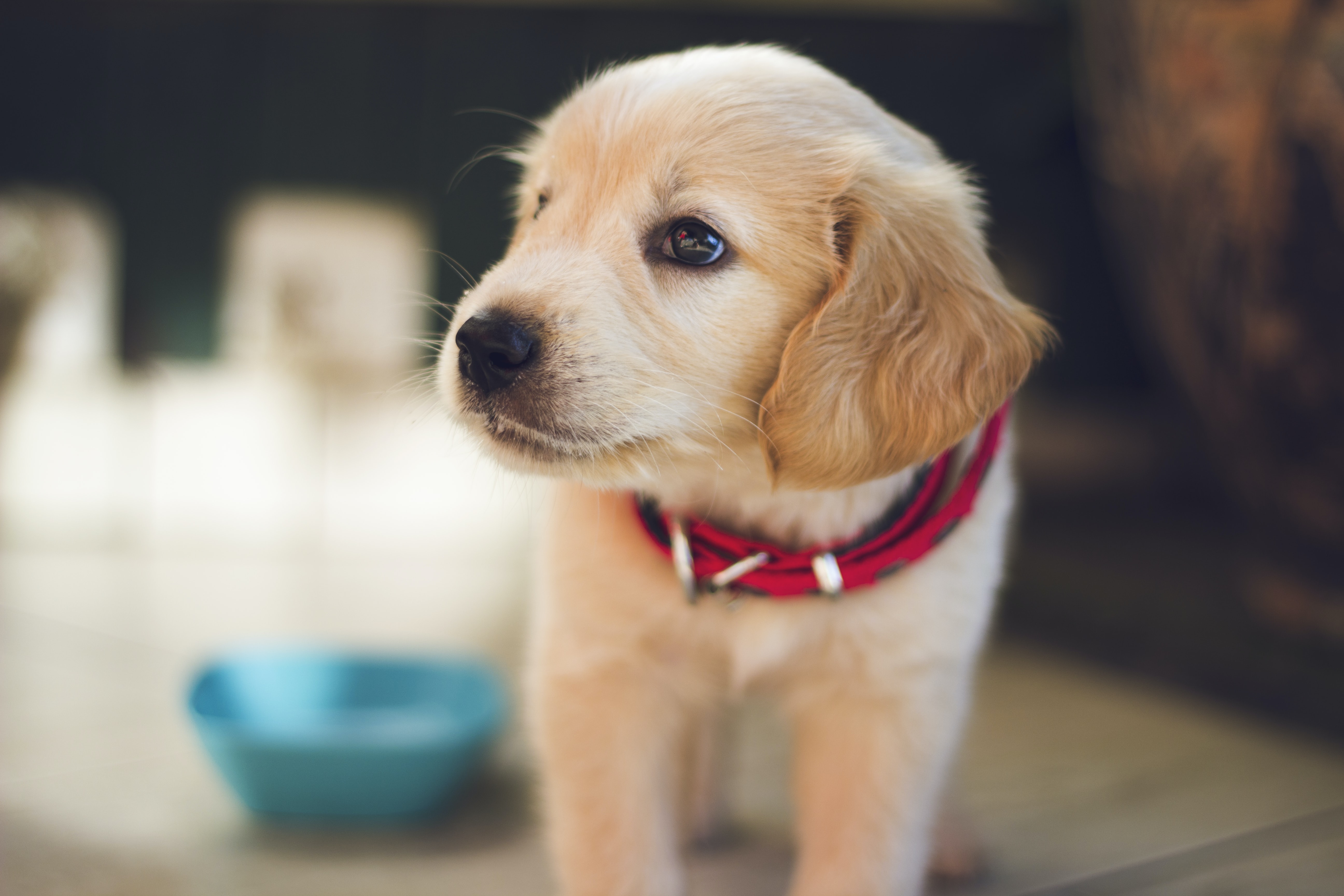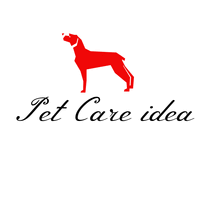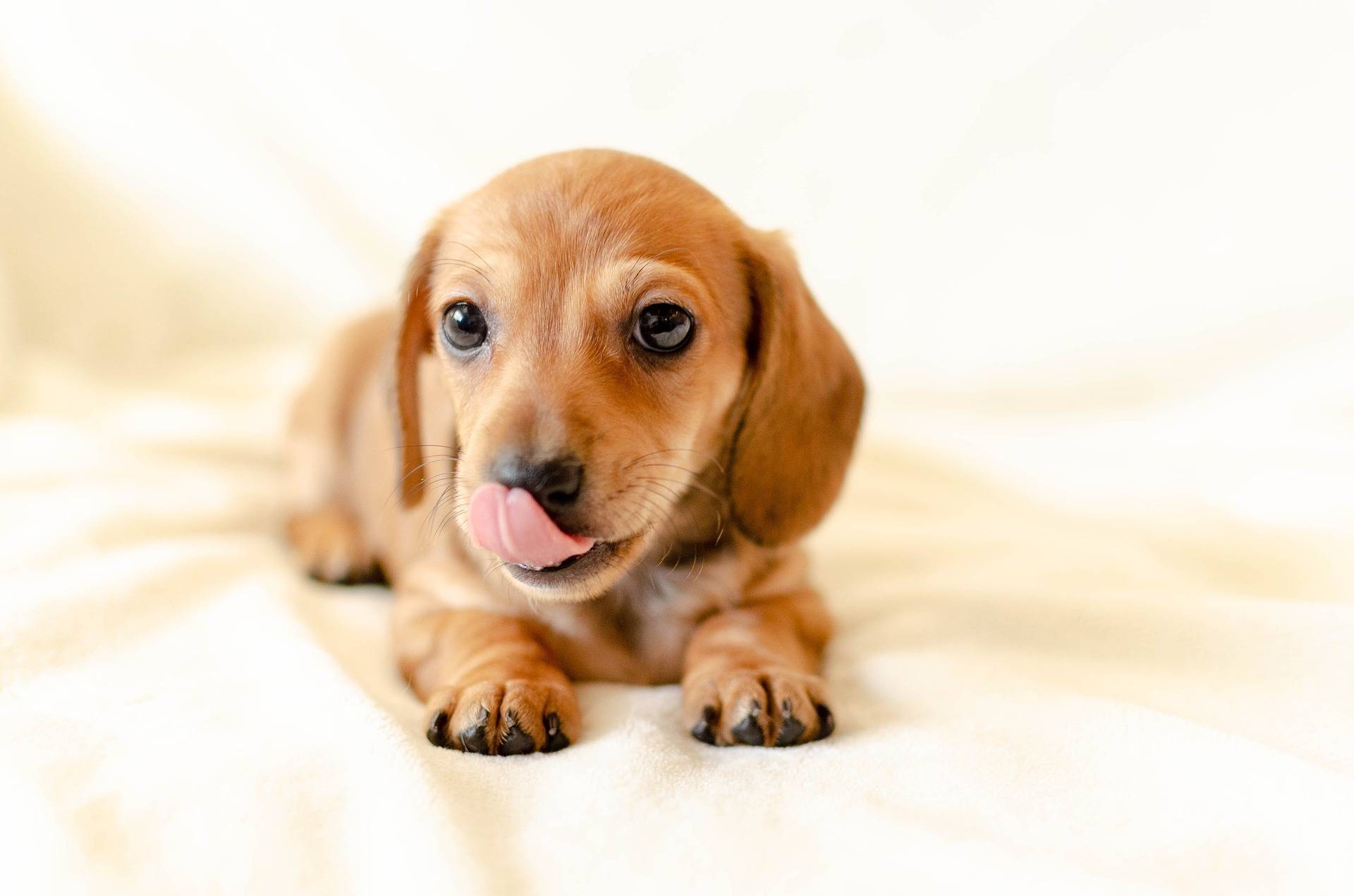Buying the right food and toys can be a challenge, but how to prepare for new puppy is essential.
If you are like most of us, you’ve probably been too busy to focus on preparing for his arrival. Use our step-by-step guide as a refresher course or use it as an introduction to everything that comes after he arrives at your doorstep!
Check out this article; learn about what foods to feed him when he first arrives, what toys and treats to buy for him, how to introduce him to the outdoors, and many more tips!
Before we discuss how to prepare for new puppy, lets ask ourself the basic question.
New Puppy – Are you ready for your dog?


Prepare mentally
Bringing a new puppy into your home is a big decision that requires a lot of preparation. It is important to remember that taking care of a new puppy is a big responsibility. Make sure you are ready for the added work before bringing your new furry friend home.
Not only do you need to prepare your home for the new arrival, but you also need to mentally prepare yourself for the added responsibility. Adopting a new puppy may burden you mentally as well as physically.
Prepare your family members
To prepare your home for the new puppy, you need to make sure that all of your family members are on board with taking care of a new dog. If not, this could create friction between family members.
It is also a good idea to make sure that all of your family members know what they will be responsible for when it comes to taking care of the new puppy. This way, you can avoid any confusion or disappointment in your family members.
Puppy proofing your home
Puppy proofing your home is essential to having a well-behaved puppy. This means putting away any objects or foods that your puppy might be able to chew on, get into, or eat. You also need to make sure that your new arrival does not accidentally get hurt or destroy any of your belongings. The last thing you need are vet bills because your puppy got into something he or she should not have.
Commitment for new puppy
If you're welcoming a new puppy into your home, it's important to be prepared for the commitment. This means having the right dog food, toys and treats on hand, as well as scheduling plenty of time for walks – whether it's raining or not.
Bringing a new puppy into the house is always a big decision, and it's important to be prepared for the time and effort that will be required to take care of it. Generally speaking, caring for a puppy takes a minimum of two to three hours, spread throughout the day and night. This includes feeding, walking, playing with, and training the puppy. However, if you invest in significant early training, you can reduce this amount of time down to just one hour per day.
Do you have Patience?
Like with any new addition to the family, when you bring home a new puppy it's important to set your expectations. Your cute little fluff ball will undoubtedly make some mistakes and may do things you're not happy about. He may continue playing bite games for months on end, and potty accidents in the house are almost inevitable. But with plenty of training, patience, and love, your new furry friend will become a cherished member of the family in no time.
How to find a new puppy?
There are a number of ways to find a new puppy. One of the best things you can do is adopt a dog from a shelter or rescue organization. There are also many online resources that can help you find puppies for sale in your area. It is important to do your research before bringing home a new furry friend! Some of the ways you can find a new puppy are as under:-
Adoption
There are many ways to find a new puppy, but the best way is to consider adoption first. There are millions of dogs waiting in animal shelters across the country, and most of them are just looking for someone to love them. Adopting a dog not only helps save a life, but it also provides companionship and security for the adopter.
No pet store
One of the most important things to remember when looking for a new puppy is not to get one from a pet store. Puppies in pet stores typically come from puppy mills, and you may be supporting this cruel industry by buying one. Instead, try looking for breeders who are affiliated with the American Kennel Club or the Humane Society of the United States.
Visit a breeder
Finding a new puppy can be an exciting process, but it's important to do your research first. One of the best ways to find a responsible breeder is by word-of-mouth; ask friends and family if they know any good breeders. Once you've found a breeder, schedule a visit to their premises so you can see how the puppies are being raised.
When looking for a new puppy, be leery of any breeder who makes claims such as “raised at home or by family etc”. These puppies are often taken from their mothers prematurely and raised in poor conditions. Instead, look for breeders who have a good reputation and can provide you with references.
Bringing home a new puppy
Preparing for a new puppy is a big undertaking, but it's well worth it in the end. You'll need to make sure your home is ready for the new addition, as well as stock up on the right food, toys, and treats. There are also some other things you'll need to do in order to make sure your new pup has a smooth transition into his or her new home. Those are discussed below.
The right food for your puppy
Puppies need high quality, nutritious food in order to grow into healthy adult dogs. That's why you should never choose cheap dog food brands or generic brands. If you want to make sure your dog stays healthy, then it's important that you feed him or her the right food. You can find a list of recommended dog foods here.
Time for adjustment
When you finally bring your new puppy home, take the time to adjust. Set up a comfortable space for them with their food and water bowls, toys, and a place to sleep. Make sure you have the right dog food, treats, and toys for them as well. And lastly, be patient as they get used to their new surroundings.
Puppies need time to get used to their new surroundings and learn the rules of their home.
House rules and guidelines for puppy
Bringing home a new puppy can be an exciting time, but also a lot of work. It's important to set up some basic rules and guidelines for the puppy to follow from the get-go. This will help them feel secure and comfortable in their new home, and make training easier down the road. By being consistent with both training and providing reassurance, you'll have your puppy on a schedule in no time!
What do new puppies need?
A new puppy is a lot of work. There are things that puppies need that people don't usually think about, such as training and socialization.
In addition, new puppies need plenty of exercise. This can be achieved through regular walks; the socialization and bonding process will go much more smoothly if both owner and pup are getting some healthy activity. Puppies should also have a good supply of toys and treats to keep them occupied and happy.
When you bring your new puppy home, there are a few things you'll need to do to make life easier for both of you. Puppies like to chew on things, so be sure to pick up all cables and cords and put them out of reach. They may also try to eat your books, so keep those covers closed and put your books away. And remember, puppies need constant supervision – even when they're sleeping!
Like most things in life, having a new puppy is not without its challenges. However, by being prepared for the early morning wake-up calls, feeding them on time, and providing them with the right toys and treats, you can make the transition much smoother for everyone involved.
Of course, bringing a new puppy into your family is a very exciting time. However, it is also important to remember that there will be some sleepless nights as you help them adjust to their new home. But in the end, those nights will be worth it as you get to enjoy all of the wonderful moments with your new furry friend!
How to prepare for new puppy checklist?
When you bring your new furry friend home, the last thing you want is for her to be uncomfortable. One way to make sure she has a smooth transition is by stocking up on some essentials before she arrives. This article provides a comprehensive checklist of everything you need to do in order to prepare for your new furry friend.
Puppy crate
The best way to control your dog's environment is by using a crate. This will help limit their access to areas you don't want them to go and keep them safe when you're not able to watch them.
Crate training can be a great way to potty train your new puppy and make them feel comfortable in their new home. Most puppies love their crates once they are introduced to them correctly- make sure the crate is an enjoyable place to be with plenty of toys and treats, and your pup will soon be using it as his or her own private space.
Read more How To Crate Train Your Puppy Fast: The Best Way For Dog Crate Training
A crate is a great way to train your new puppy and help prevent them from soiling where they sleep. It also keeps them secure when you're out of the house or too occupied to watch them. To make the crate training process easier, follow these simple steps:
- Start with short periods of time and gradually increase it as your puppy becomes more comfortable
- Make sure your puppy has plenty of water and access to their potty area
- Reward your puppy for going in the crate
- Never use the crate as a punishment.
There are a few different types of crates you can choose from when getting a new puppy. A durable plastic crate is easy to clean and perfect for traveling. Another option is a wire crate, which provides more ventilation and visibility for the puppy. Whichever crate you choose, make sure to familiarize your puppy with it before leaving them in it for an extended period of time. Find out more 10 Safest Dog Crate That Will Protect Your Puppy
- Safest dog crate for puppy
- Safest dog crate for small dogs
5 awesome Dog crates under $100, plus one awesome car seat for your best friend
Puppy Bed
When searching for the perfect puppy bed, there are a few features you should keep in mind. The bed should be comfortably padded, durable enough to withstand your pup's playtime, and easy to clean. Additionally, if you have a particularly active dog, look for a bed with a sturdy frame that will hold up to his jumping and playing.
There are many different types of beds on the market, but those with removable covers and washable surfaces are ideal for puppies. This way, you can easily clean any accidents and keep your puppy's bed fresh and clean.
Puppy Gate and Playpen
Puppy Gate and Playpen are two great options for supervision. A gate is good for keeping your puppy in one designated area, such as a room or the kitchen, while you're away. A playpen is perfect for when you want to give your pup some freedom but still need to be able to keep an eye on them.
Dogs are curious animals and love to explore their surroundings. Unfortunately, this can lead them into dangerous situations like falling down stairs. To prevent this, many pet owners install puppy gates and playpens to restrict their dog's access to certain areas of the house.
Until your dog is at least six months old, it's important to keep a puppy gate or playpen in the house to restrict their movement and prevent them from getting into trouble. This will help train them where they are allowed to go and not go, making it easier when you eventually remove the gate/playpen.
When choosing a gate for your new puppy, make sure to keep a few things in mind. The gate must be durable enough to withstand your dog's attempts to escape, and there should be no openings large enough for the dog to get stuck or strangled. In addition, make sure the gate is sturdy so your dog can't chew through it.
Puppy Food
When you first bring your new puppy home, one of the most important things to do is to find out what she's been eating and buy a small bag of that food. Suddenly switching from one food to another can cause diarrhea, which is definitely not something you want when you're trying to housetrain your dog.
There are many different types of puppy food on the market, and each has its own set of benefits and drawbacks. Some foods are better for puppies with allergies or sensitive stomachs, while others contain more nutrients that can help puppies grow up healthy and strong. It is important to do your research before buying puppy food and to find a food that fits your pup's individual needs.
One of the most important things to remember when you get a new puppy is to choose the right type of food for them. If you make too many changes to their diet, it can lead to digestive problems. It's best to start with a food that they are already used to and then make small changes over time.
Puppy Food Storage
Food storage is important for all kinds of food, but it's especially crucial when it comes to puppy food. By keeping your puppy's food in a cool, dry place and using airtight containers, you can help keep it fresh and bacteria-free.
When it comes to storing wet puppy food, there are a few things to remember. First, refrigerate the food once it is opened and make sure to label it with the date. Second, different types of wet food have different storage needs. For example, canned foods can last up to two years in a pantry while pouches should be stored in the fridge.
It is important to store kibble in its original bag and inside an air-tight container. This will protect the food from pests and humidity, which can cause the food to spoil.
If you have prepared freeze-dried or dehydrated foods for your new puppy, you can store them in their original packaging. This will protect the food from and keep it fresh.
In order to make sure that your puppy is getting the right food and the right amount of food, you can use a pet food scale. This will help you measure the food more accurately.
Puppy Food Bowls
You'll need to provide your pup with a food and water bowl, and it's a good idea to have a few extras on hand so you can wash them every day. That way, you'll always have a clean bowl available when your dog needs it.
There are many types of dog dishes on the market, and each has its own benefits and drawbacks. Plastic dishes are cheap and lightweight but can be easily chewed or broken. Ceramic dishes are more durable but can be heavy and expensive. Steel dishes are durable and affordable but can be difficult to clean. Weighted bowls help keep dogs from eating too fast, while elevated bowls help prevent bloat.
Stainless steel food bowls are a popular choice for puppies because they are durable and will not chip. This is important because you do not want your puppy to ingest any small pieces of plastic that may be in the bowl.
Puppy Treats
Puppy treats can serve as a valuable training tool, but they can also just be a nice way to give your dog a little something special. They come in all sorts of flavors and shapes, so you can find the perfect ones for your pup.
It is important to keep in mind that when training your puppy, small treats are preferable to larger ones. This will make the process easier and faster. Puppy treats should also be healthy and help with their overall development.
When looking for treats for your new puppy, be sure to check the ingredients. Many commercial dog treats are made with unhealthy additives and fillers. Instead, look for healthy, whole-food ingredients in treats made specifically for dogs. This will help keep your pup healthy and happy.
In order to make sure that your puppy is getting the best treats, it's important to be aware of the nutritional content. Training treats should be low in fat and sodium, as those can be unhealthy for puppies. Additionally, you'll want to find treats that are appealing to your pup and easy to break into small pieces.
Puppy Bone
In order to satisfy your new puppy's chewing urges, it is recommended that you have at least one or two bones on hand. Puppies tend to chew more as their teeth come in, so providing them with something to chew on can help prevent them from chewing on furniture, shoes, and other items around the house.
However, not all bones are created equal. You want to make sure that you choose a bone that your dog can't possibly choke on. Bigger is always better in this case.
Puppy Chew Toys
Teething puppies need something to chew on and play with to help relieve the pain of teething. Chew toys are a great way to give your puppy something appropriate to chew on, and they can also provide hours of entertainment.
Puppies chewing things is their natural way of exploring the world and relieving boredom. That's why it's important to provide them with safe chew toys that will let them do this without damaging furniture or other objects in your home.
In order to keep puppies entertained, it is important to provide them with a variety of different types of toys. Puzzle toys help puppies learn and grow mentally, chew toys help keep their teeth healthy, chase toys let them burn off some energy, and heartbeat toys can help calm them down.
Puppy Toys
There are a plethora of different dog toys on the market these days. It is important to pick the right type of toy for your dog to ensure they have a good time and stay healthy and entertained.
When you get a new puppy, buy some different toys for them. This allows you to determine what kind of toys your dog likes and dislikes. Some dogs prefer plush toys, while others might prefer rubber balls. Try out a few different types and see which ones your pup enjoys the most!
A Collar or Harness for puppy
When you first bring your new dog home, she will need a collar A simple adjustable nylon or leather collar that buckles together is perfect for this. As your dog grows, you may want to consider a harness instead of a collar to avoid neck injuries.
There are many different types of collars and harnesses on the market, so it can be tough to decide which one is best for your new puppy. A collar is a good choice if you want your dog to wear their ID tags or other important information. A harness is a great choice for teaching your dog not to pull on the leash.
When you're picking out a collar or harness for your new puppy, make sure to keep a few things in mind. It shouldn't be too tight, but it also shouldn't be so loose that it'll slip right off—you should be able to slip only two fingers under the collar. And when your dog is in her crate, take the collar off—she may scratch at it until she gets used to it, and her foot could get stuck in it. The collar itself can also get stuck on the crate, creating a choking risk.
When it comes to choosing the right gear for your new puppy, there are a few different options. A collar is the most common choice, but a harness is also great for most dogs for general control, safety, and training—especially for puppies eight months and younger.
Puppy Leash
A leash is an important tool for both walking and training your dog. It's necessary to have a good quality leash that's strong enough to handle your pup's pulling. Additionally, make sure you're familiar with local leash laws in order to avoid any fines or penalties.
First and foremost, when you're getting a new puppy, you'll need to get them a leash. For the initial leash, choose one that's four to six feet long so your pup can explore comfortably. If you're taking them on walks, a retractable leash is another option; just be sure to use it for walks only.
A longer lead leash is necessary for training purposes. This will give the dog enough room to roam and explore without getting too close to potential distractions.
Puppy ID Tag
Make sure your pet has some form of identification in case it gets lost or stolen. This can include a collar or harness with an ID tag, microchip implantation, or registration with a national pet recovery service.
In order to ensure your furry friend's safe return if they ever get lost, it's important to put an ID tag on them. You can choose what to put on the tag, but at the very least, include your phone number. If someone finds your dog and wants to return them to you, they'll be able to do so with ease. You can also choose to include your name, address, and other identifying information about your pet on the tag.
Puppy Training Equipment
Training a new puppy can be a engaging experience. With the right equipment, you can make training easier and more fun for both you and your pup.
Clicker training is an option for those who want to train their new puppy with treats, or as an alternative to treat training. The clicker will make a clicking noise, and then you give the puppy the treat. This way, you can mark the behavior you want your puppy to repeat and reward them accordingly.
Puppy Brush
Brushing your puppy at least once a week is crucial, regardless of their breed. It helps remove dirt, debris, and dead hair from their coat, preventing matting and tangles. Additionally, it can help keep your puppy's skin healthy and free of parasites.
Ideally, you should start brushing your puppy as early as possible to help reduce shedding and matting. A small soft slicker brush is a good place to start, preferably one with rubber or plastic tips. This will help remove dead hair and distribute the natural oils evenly across your pup's coat.
A dog brush is an important tool to have when you own a dog. Not only does it help remove excess hair and dirt, but the bristles can also help remove oils and sweat from the skin. This will keep your dog's coat clean and healthy – which is especially important if your dog has a long coat!
Puppy Deodorizer
One way to clean up after an accident is by using a puppy deodorizer. This will help to absorb the smell and make it less noticeable.
If your new puppy has an accident, you can use a chemical deodorizer to remove the urine or feces odor. Be sure to read the product label and follow all instructions to avoid any potential health hazards.
Your new puppy will undoubtedly have an acute sense of smell that can detect any old scent for a long time, even if you can't. In order to clean the spot where your puppy relieved himself, use an enzyme-based chemical deodorizer.
Puppy Poop Bags or Scooper
It is now a law in many states that you must pick up your dog's poop. This means that you need to have a way to pick it up, and many people choose to use puppy poop bags or scooper.
Nobody likes stepping in poop, least of all when it's a fresh pile on the street. To avoid this, always carry poop bags or a scooper to pick up after your pup.
Puppy Grooming Supplies
Puppy grooming tools vary depending on the breed of your dog. There are some general tools that will be needed for most breeds, such as a brush, comb, and nail clippers, but the specific tools you'll need also depend on your dog's coat type and length.
You will need to select the right brush or comb for your dog's coat type. For example, if you have a long-haired breed such as a Labrador Retriever, you'll need to invest in a grooming rake or comb to prevent tangles. On the other hand, if you have a short-haired breed such as a Dalmatian, you will need to select a brush with firm bristles
Common points for new puppy owners
Vaccinations and licenses of dogs
When you get a new puppy, there are a few things you need to take care of right away. One of the most important is getting them vaccinated and licensed. Depending on where you live, there may be other things you need to do as well, such as registering your dog with the city or getting a permit for them to be off-leash in designated areas. Be sure to talk to your vet about what's recommended in your area.
Puppy Insurance
When you're taking on a new puppy, there are a lot of things to think about. Aside from finding the right food, toys, and treats, you'll also want to make sure that you have pet insurance. That way, if your pup ever needs unexpected medical care, you won't have to worry about the cost.
What to do with a puppy when you first bring it home?
The very first thing when you first bring a new puppy home is to crate train it. This will help keep your puppy safe and secure, as well as potty trained. You should also make sure to have a variety of toys, chews, and treats on hand to help keep your puppy entertained and happy.
Designate an area in your yard for them to potty. This will help them learn where they're supposed to go and make it easier for you to clean up any accidents.
Final Thoughts
There are a number of things to consider when preparing for a new puppy. The most important is making sure you have the right food, toys, and treats. You'll also need to set up a space for your puppy to sleep and play, and make sure you have plenty of time to devote to training and exercising your pup.
Finally, make sure to prepare your new puppy for a lifetime of good health by teaching it about outdoor activities, proper diet and nutrition (including treats), and how to have fun. Puppyhood is a time of exploration and growth, so make sure to set the foundation for a happy, healthy dog!





